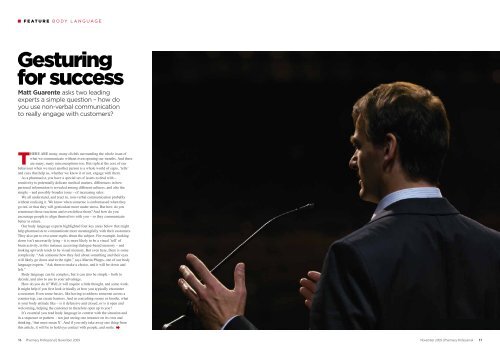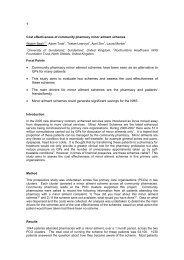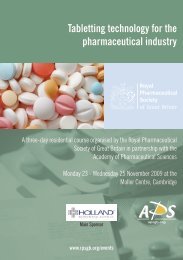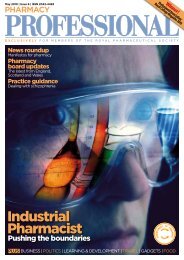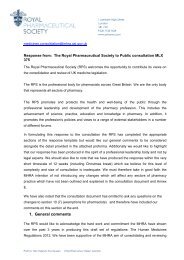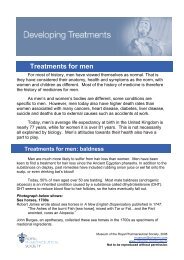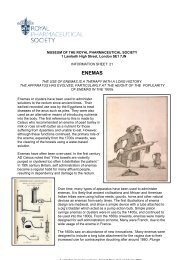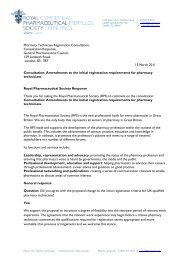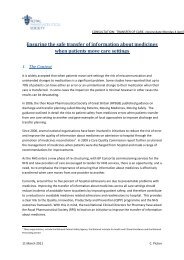Pharmacy Professional - Royal Pharmaceutical Society
Pharmacy Professional - Royal Pharmaceutical Society
Pharmacy Professional - Royal Pharmaceutical Society
You also want an ePaper? Increase the reach of your titles
YUMPU automatically turns print PDFs into web optimized ePapers that Google loves.
f e at u r e b o d y l a n g u a g e<br />
Gesturing<br />
for success<br />
Matt Guarente asks two leading<br />
experts a simple question – how do<br />
you use non-verbal communication<br />
to really engage with customers?<br />
There are many, many clichés surrounding the whole issue of<br />
what we communicate without even opening our mouths. And there<br />
are many, many misconceptions too. But right at the core of our<br />
behaviour when we meet another person is a whole world of signs, ‘tells’<br />
and cues that help us, whether we know it or not, engage with them.<br />
As a pharmacist, you have a special set of issues to deal with –<br />
sensitivity to potentially delicate medical matters, differences in how<br />
personal information is revealed among different cultures, and also the<br />
simple – and possibly broader issue – of increasing sales.<br />
We all understand, and react to, non-verbal communication probably<br />
without realising it. We know when someone is embarrassed when they<br />
go red, or that they will gesticulate more under stress. But how do you<br />
counteract those reactions and even defuse them? And how do you<br />
encourage people to align themselves with you – so they communicate<br />
better in return.<br />
Our body language experts highlighted four key areas below that might<br />
help pharmacists to communicate more meaningfully with their customers.<br />
They also put to rest some myths about the subject. For example, looking<br />
down isn’t necessarily lying – it is more likely to be a visual ‘tell’ of<br />
brain activity, in this instance accessing dialogue-based memory – and<br />
looking upwards tends to be visual memory. But even here, there is some<br />
complexity. “Ask someone how they feel about something and their eyes<br />
will likely go down and to the right,” says Martin Phipps, one of our body<br />
language experts. “Ask them to make a choice, and it will be down and<br />
left.”<br />
Body language can be complex, but it can also be simple – both to<br />
decode, and also to use to your advantage.<br />
How do you do it? Well, it will require a little thought, and some work.<br />
It might help if you first look critically at how you typically encounter<br />
a customer. Even some basics, like having to address someone across a<br />
counter-top, can create barriers. And in consulting rooms or booths, what<br />
is your body attitude like – is it defensive and closed, or is it open and<br />
welcoming, helping the customer to therefore open up to you?<br />
It’s essential you read body language in context with the situation and<br />
in a sequence or pattern - not just seeing one instance on its own and<br />
thinking, ‘that must mean X’. And if you only take away one thing from<br />
this article, it will be to hold eye contact with people, and smile.<br />
Æ<br />
16 <strong>Pharmacy</strong> <strong>Professional</strong> | November 2009 November 2009 | <strong>Pharmacy</strong> <strong>Professional</strong> 17


